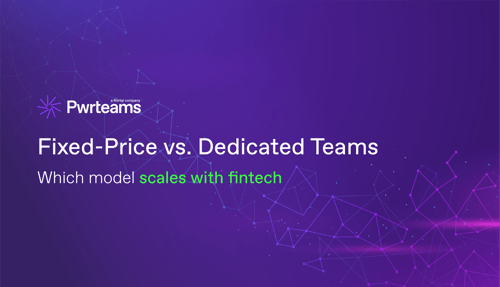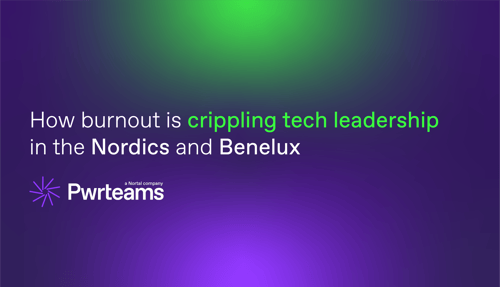How to Develop ERP SAAS Solution for your Business


In this article, you will get an overview of the current state of the cloud ERP landscape as well as step-by-step guidance on how you can develop your own ERP SaaS solution.
Understanding the four types of cloud ERP solutions
While the four cloud ERPs offer pretty much the same benefits, there are very distinct differences in how they are set up and their impact on your business when it comes to flexibility, security, and finances.
1. On-premises (Private Cloud)
With a private cloud, data is stored on servers owned and managed by your company. As a result, they are much more robust and secure. The upside to this cloud type is that you have the option to run a hybrid-cloud ERP solution consisting of both your private cloud and the traditional on-premise ERP. You can host all this by yourself, or leverage your infrastructure to host your entire ERP solution on a private cloud. On-premises integrates with the majority of enterprise modules & tools and offers a diverse range of functionalities. It’s also the most customizable of all these four cloud ERPs.
The only reason why most people don’t choose this cloud ERP type is that it requires a large up-front investment for local servers and databases, among numerous other fees.
- Who is this ideal for?
Organizations that are 100% confident in their product and have enough funds to go all the way in.
2. Proprietary Cloud
The proprietary cloud is quite similar to the private cloud. The only major difference between the two is that in the proprietary cloud, you don’t host the ERP. Instead, a vendor will host an instance of the ERP system in its own data center, giving you the much-needed flexibility. For instance, whether you want the patches to be applied instantly or only when approved, to implement monthly billing per-user or the traditional billing (annual), etc.
- Who is this ideal for?
Companies that need the functionality of a private cloud but do not have the funds or don’t want to commit yet.
3. White label
White Label Cloud is also quite similar to Proprietary Cloud. It’s just that in this case, part of the ERP system is hosted in a public IaaS (Infrastructure as a Service), like AWS instead of in the ERP vendor’s data center. Note that the term white label is simply used to describe two very different cloud setups; thus, the white-label cloud might vary depending on who is arranging the White Label Cloud deployment – the vendor or a reseller.
- Who is this ideal for?
Any business that wants both the benefits of both the proprietary cloud and SaaS modified will find white label cloud deployment ideal.
4. SaaS
SaaS (Software as a Service) is the go-to Cloud ERP, for most organizations. When using SaaS, you don’t own your software. Instead, your data will be stored in a public cloud where users will share a single instance of the software, paying a monthly subscription.
The upside to SaaS is that it can be implemented much faster compared to other cloud deployments. Patches are fixed automatically without the need always to summon your IT team. And this is done before your organization feels any impact from them. With automatic updates, you can also be confident that long periods of downtime due to an ERP solution update will never be your problem again.
- Who is this ideal for?
You! And anyone who wants to a Cloud ERP SaaS with the most benefits and easy to build. Now that you know the different Cloud ERP types out there, which one are you choosing? Considering the majority of people opt for Cloud ERP SaaS, we have compiled a list of detailed steps you can take to build your own outstanding SaaS solution in 2020. Dig in!
6 Steps for ERP SaaS system development
Building an ERP SaaS product is a fairly complex process, and it can have a widely varying architecture, depending on the feature set and technology stack involved. As a result, it’s not easy to provide a solid map of the research and development process. Neither is it easy to put a price tag on it.
While every SaaS ERP development project has its own complexities, below are six basic steps you will have to go through, regardless of your ERP type:
1. Explore and understand your business requirements
This is the first and most crucial step, and if you do it right, you are most probably set for success. During this stage, you need to understand the scope of your project and determine the financial, talent, and time investment required to bring it to completion.
While brainstorming in your cubicles, researching and studying the competition are all useful, actually meeting your target audience and talking to them will make a more significant difference. Do your due diligence during this research phase so that you get a clear and close-knit vision of your product.
2. Establish a plan and build key modules
Now that you have done your research and know the ins and outs of the ERP SaaS development process, it’s time to establish a scope and budget for your project.
Set up your goals and develop the pragmatic steps needed to achieve them successfully. Are you planning a simple and straightforward product or a long-term one? Which key modules of the ERP solution need to be prioritized. Approximately how much investment is needed in terms of money, talent, time?
All the above questions should be addressed during this stage. As a general, it is highly recommended to begin with a smaller scope ERP SaaS solution that you can later grow through iterations. Begin with developing one module and then polish it as the project progresses.
3. Establish a well-equipped team
An experienced and dedicated team is essential in developing a successful ERP SaaS solution. Considering the complexity of the whole process, you need a team that can give it 100%. It would be best if you had people that can deliver the security, scalability, and performance, which is at par with customer’s expectations. Note that for your team to perform at their best, it’s your responsibility to equip them with the right tools, preferably cutting-edge tools which allow them to bring out their full potential.
Gathering the best team inhouse doesn’t just happen overnight, and it can take a toll on your finances. Although, it’s worth the effort, for the meantime you utilize pwrteams highly experienced dedicated teams.
At this stage, you will also face the dilemma, whether to choose a paid platform or go open source and use programming languages that guarantee you fast prototyping and quicker results. Choose the former. A well supported and well-documented platform will reward you with a better ROI in the long run. Consider ASP.NET
4. Build a flexible solution architecture
When constructing your architecture, you should make it in such a way that it can be easily further extended if the need comes. Please pay more attention to the workflow engine and make sure that it supports task definition, role-based tasks access, and rule-based switching. Begin by developing reusable parts.
Keep in mind that the ERP SaaS service provider you choose will most probably determine your capabilities and terms of service of your chosen SaaS service provider, so make sure to evaluate all the available options carefully.
5. Build a prototype
To be sure, you are on the right path, and without wasting resources, start by building a minimum viable product or prototype. For instance, you can start with a single module for a particular department. If you follow this path, make sure that all the people in the department get hands-on experience with your suggested prototype. Their feedback will be very helpful in perfecting the product, adjusting the product specifications, budgeting, and the time and resources needed. If everything goes well, then you can polish up your prototype and put it on the market.
6. Iterate and improve as you go
With your MVP already on the market among real people, you will find it easy to get valid and useful feedback. That means building your next modules won’t be based on guesswork but on an iterative development process. Listen to what your users say and focus on usability.
As much as you now know how to go about the whole building process, don’t rush the process. Developing a Cloud ERP SaaS is a gradual process that requires intense dedication and investment. It would help if you had a solid technical and marketing foundation to set yourself up for success.
Over to you
The term “Enterprise Resource Planning” (ERP) was coined in the 1990s, and ever since, ERP solutions have continuously reinvented themselves for the better. Leverage the insights provided in this article to keep up and build an outstanding cloud ERP SaaS—with the best ROI. Don’t miss out!
READ ALSO
 September 29, 2025
September 29, 2025
Build your team or extend with ours? Here’s what helps fintech CTOs decide
Read the post September 10, 2025
September 10, 2025
Fixed-price projects vs dedicated teams: A fintech CTO comparison
Read the post September 3, 2025
September 3, 2025
How burnout is crippling tech leadership in the Nordics and Benelux
Read the post September 29, 2025
September 29, 2025
Build your team or extend with ours? Here’s what helps fintech CTOs decide
Read the post September 10, 2025
September 10, 2025
Fixed-price projects vs dedicated teams: A fintech CTO comparison
Read the post September 3, 2025
September 3, 2025
How burnout is crippling tech leadership in the Nordics and Benelux
Read the postWrite your own
success story
with Pwrteams!
Share your details in the form, tell us about your needs, and we'll get back with the next steps.
- Build a stable team with a 95.7% retention rate.
- Boost project agility and scalability with quality intact.
- Forget lock-ins, exit fees, or volume commitments.